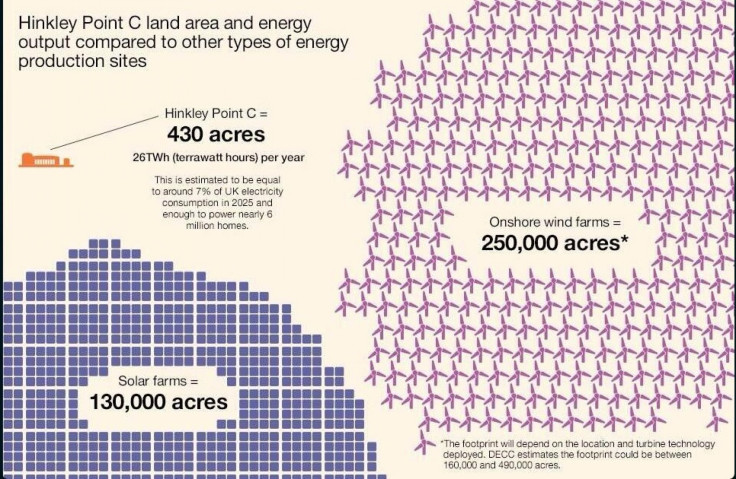The Hidden Cost Of Solar And Wind Power In One Image From The UK

In light of new plans to build the Hinkley Point C power station in southwest England, the U.K. energy ministry released an infographic that compares the amount of real estate the nuclear plant will occupy to the land demands of current wind and solar power facilities.
The new $26 billion Hinkley project is expected to generate about 5 percent of England’s energy generating capacity, whereas it will occupy only a fraction of the land area required by those other energy sources.
The deal comes as the nuclear energy industry has seen many projects scaled back or killed outright after the Fukushima nuclear power plant was destroyed in 2011 by an earthquake and tsunami. Two years later, Japanese authorities there still face critical problems with radiation leaks.
Governments worldwide are skeptical about developing nuclear energy due to political and safety concerns. But they also have ambitious goals of reducing carbon emissions, and nuclear power is an effective choice toward that end.
England faces that same dilemma as it tries to diversify its energy mix and cut its carbon footprint by 80 percent by 2050.
British Prime Minister David Cameron welcomed the deal, saying it will create 25,000 jobs and bring in billions of dollars in investment.
“This also marks the next generation of nuclear power in Britain, which has an important part to play in contributing to our future energy needs,” Cameron said. The prime minister was referencing warnings by regulators that suggest England risks electricity blackouts if it does not begin replacing old power plants.
Here is a look at the energy ministry’s infographic, which the Telegraph found on the ministry's site.

© Copyright IBTimes 2024. All rights reserved.






















